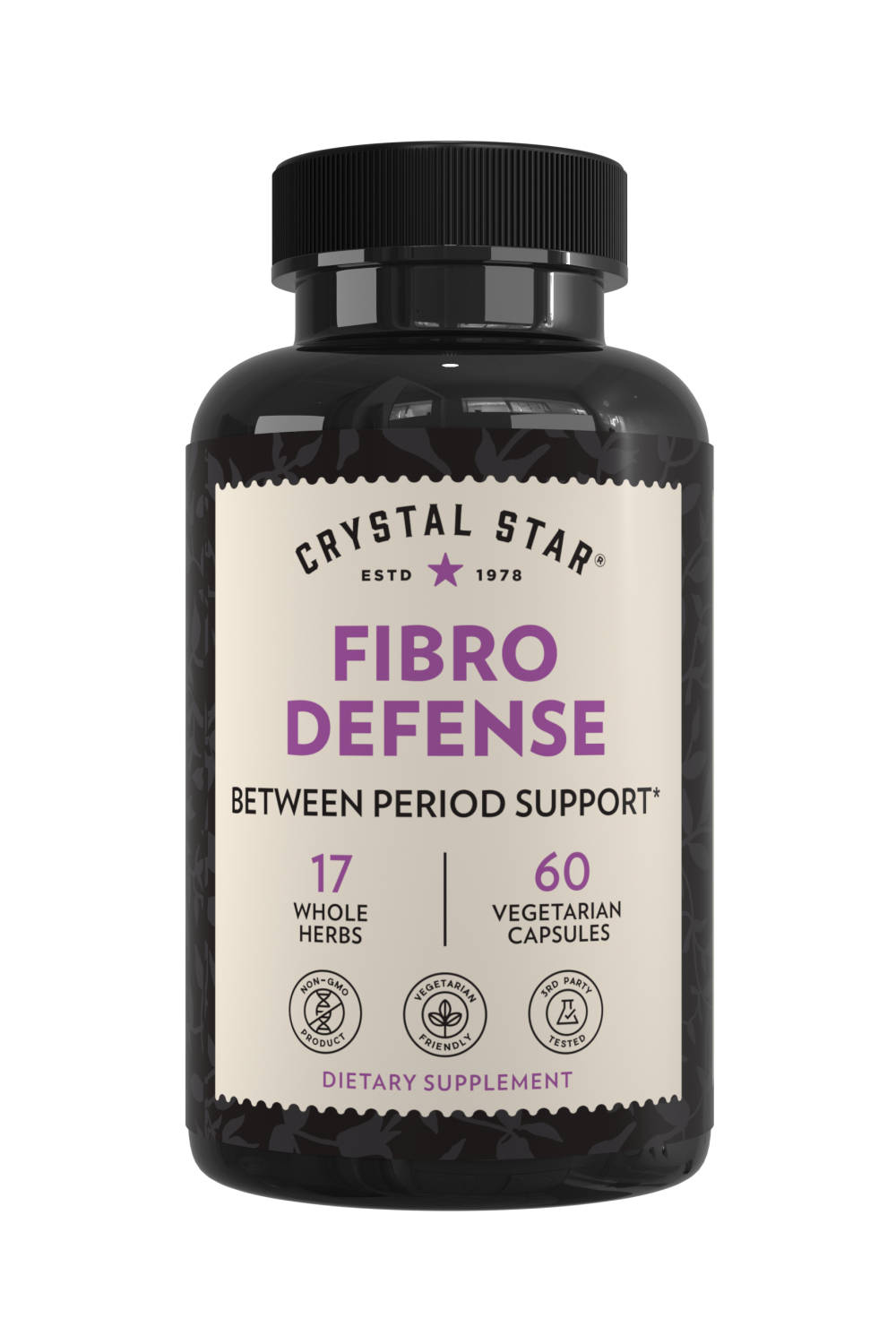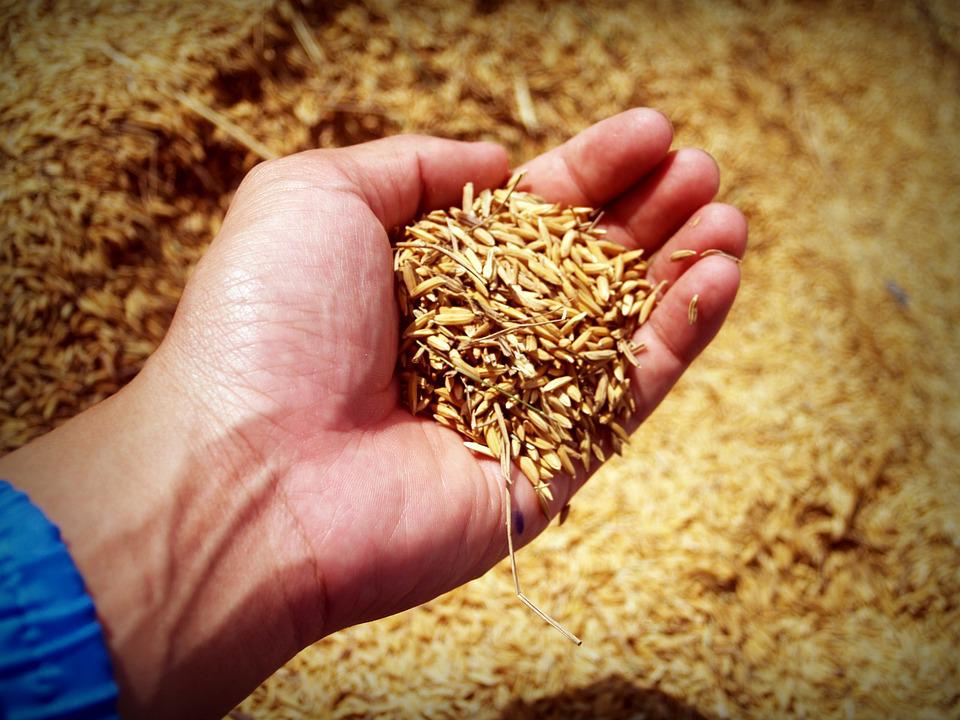
Jun 19, 2020
10 mins read
CANDIDA CONTROVERSY: IS YEAST CAUSING YOUR HEALTH PROBLEMS?
If you ever want to ruffle some healthcare-feathers, bring up the topic of chronic Candida yeast overgrowths. This theorized condition has prompted medical debates since the 1980s. [socialpug_tweet tweet="Proponents of the chronic Candida overgrowth theory say that it can cause fatigue, intestinal issues, headaches, anxiety, joint pain, or respiratory problems. " display_tweet=""] A chronic Candida overgrowth is an illness thought to cause an array of symptoms, including fatigue, intestinal issues, headaches, anxiety, joint pain, respiratory problems, among other issues. Some physicians think these symptoms can be caused by Candida yeast, a group of fungi that typically live harmlessly inside of our bodies. The theory proposes that this type of fungus can overgrow and cause a chronic systemic condition. But not all physicians endorse this theory. In fact, many doctors believe this condition doesn’t exist at all. It hasn’t been accepted by the World Health Organization or the Centers for Disease Control and Prevention. They think the science behind this theory is lacking. But is it? In this post, we’ll examine Candida overgrowths and discover their possible symptoms, risk factors, and treatments. We’ll dive into the debate and find out why this medical condition causes so much controversy. And we’ll break down recent scientific studies to find out precisely what is known about these overgrowths.
Most scientists only recognize Candida infections
To explain Candida, we have to start at the source: the microbiome. Trillions of organisms live inside and on your body. It may sound creepy, but these invisible creatures rule our bodies. They help us absorb nutrients, get energy, promote immune function, and regulate mood.[1] Candida is a genus of fungi that live inside of that microbiome. They’re a small portion of a large community full of human-hosted bacteria, viruses, and other fungi. Well, they’re a small portion usually. [2][3] We now know that specific actions, such as antibiotic overuse, can disrupt our guts and create microbial changes—not only are the harmful bacteria removed, but so are the beneficial ones. This can leave unprotected intestinal substrate, or surfaces, for other microorganisms to flourish. And Candida is exceptionally skilled at colonization. Given the opportunity, it can reproduce and spread into an overgrowth.[4][5] A Candida overgrowth can cause an infection, also known as candidiasis. There are two different forms of candidiasis: superficial and invasive. They are both clinically-proven medical issues that are recognized and treated around the world. For example, vaginal yeast infections, some urinary tract infections (UTIs) and diaper rash are superficial infections usually caused by Candida albicans. To read more about those conditions, check out this post: What is Candida, and how can it affect your health?
 A chronic overgrowth of Candida differs from candidiasis because it is not technically considered an infection. Instead, it’s a theory that this type of yeast can overgrow in the gut, and by that action alone cause a myriad of non-acute health problems. [socialpug_tweet tweet="Even though many western medical doctors refuse to diagnose chronic candida overgrowth, alternative practitioners commonly treat patients for it. " display_tweet=""] Chronic Candida overgrowth is a condition that goes by many names. You may have heard of it referred to as a yeast hypersensitivity syndrome, Candida-related complex, or just Candida.[6]
A chronic overgrowth of Candida differs from candidiasis because it is not technically considered an infection. Instead, it’s a theory that this type of yeast can overgrow in the gut, and by that action alone cause a myriad of non-acute health problems. [socialpug_tweet tweet="Even though many western medical doctors refuse to diagnose chronic candida overgrowth, alternative practitioners commonly treat patients for it. " display_tweet=""] Chronic Candida overgrowth is a condition that goes by many names. You may have heard of it referred to as a yeast hypersensitivity syndrome, Candida-related complex, or just Candida.[6]
 The symptoms of this alleged sensitivity are expansive. They include digestive complaints, muscle aches, joint pain, headaches, and sinus congestion. It can also present neurologically with fatigue, anxiety, mood swings, and depression. And some professionals think it causes a craving for sweets, foul breath, hormone imbalances, and respiratory issues.[9] [10] [11]
The symptoms of this alleged sensitivity are expansive. They include digestive complaints, muscle aches, joint pain, headaches, and sinus congestion. It can also present neurologically with fatigue, anxiety, mood swings, and depression. And some professionals think it causes a craving for sweets, foul breath, hormone imbalances, and respiratory issues.[9] [10] [11]
 Some studies suggest that Candida overgrowth is directly connected to inflammation in the gut. Patients with diseases that are characterized by inflammation, such as IBD or gastric ulcers, can also have significant Candida populations in their intestines. However, the relationship between Candida and inflammation appears to be like a chicken and an egg. Animal studies show that Candida can aggravate pre-existing inflammation, but it also revealed that inflammation allows Candida to spread. So it’s unclear which condition is the cause and which the effect. Whichever comes first, focusing on reducing intestinal inflammation may be beneficial to prevent or treat chronic Candida overgrowth.[22] Low-glycemic diets, anti-inflammatory foods, and regular exercise may help reduce chronic inflammation.[23]
Some studies suggest that Candida overgrowth is directly connected to inflammation in the gut. Patients with diseases that are characterized by inflammation, such as IBD or gastric ulcers, can also have significant Candida populations in their intestines. However, the relationship between Candida and inflammation appears to be like a chicken and an egg. Animal studies show that Candida can aggravate pre-existing inflammation, but it also revealed that inflammation allows Candida to spread. So it’s unclear which condition is the cause and which the effect. Whichever comes first, focusing on reducing intestinal inflammation may be beneficial to prevent or treat chronic Candida overgrowth.[22] Low-glycemic diets, anti-inflammatory foods, and regular exercise may help reduce chronic inflammation.[23]
References: Amie Durenberger is a professional naturalist and science journalist located in Minneapolis, Minnesota. Since 2013, she has worked as an environmental educator, teaching children and adults about biodiversity, conservation, and edible & medicinal plant uses. Her favorite herbal preparations include fresh nettle tea, homemade plantain salve, and wild sumac lemonade. [1] https://www.ncbi.nlm.nih.gov/pmc/articles/PMC5962619/ [2] https://www.ncbi.nlm.nih.gov/pmc/articles/PMC4528021/ [3] https://www.ncbi.nlm.nih.gov/pmc/articles/PMC3708393/ [4] https://www.ncbi.nlm.nih.gov/pmc/articles/PMC3708393/ [5] https://www.ncbi.nlm.nih.gov/pmc/articles/PMC4831151/ [6] https://www.winchesterhospital.org/health-library/article?id=21475 [7] https://www.birminghammedicalnews.com/news.php?viewStory=1526 [8] https://www.amymyersmd.com/2019/10/how-do-i-know-its-candida/ [9] https://www.winchesterhospital.org/health-library/article?id=21475 [10] https://draxe.com/health/candida-symptoms/ [11] https://www.amymyersmd.com/lp/candida-breakthrough-egw/ [12] https://www.jacionline.org/article/S0091-6749(86)80073-2/pdf [13]https://pdfs.semanticscholar.org/69b5/389603804d27e475d7de47860757cb35936d.pdf [14] https://www.cdc.gov/ibd/what-is-IBD.htm [15] https://gut.bmj.com/content/66/6/1039 [16]https://www.researchgate.net/publication/232075144_Fungi_and_inflammatory_bowel_diseases_Alterations_of_composition_and_diversity [17]https://www.researchgate.net/publication/12811005_The_Diagnosis_and_Incidence_of_Allergic_Fungal_Sinusitis [18]https://www.cell.com/cell/fulltext/S0092-8674(14)00345-6?_returnURL=https%3A%2F%2Flinkinghub.elsevier.com%2Fretrieve%2Fpii%2FS0092867414003456%3Fshowall%3Dtrue [19] https://www.nature.com/articles/nri.2016.42 [20] https://journals.plos.org/plospathogens/article?id=10.1371/journal.ppat.1007260#sec009 [21] https://academic.oup.com/mmy/article/49/3/237/1093362 [22] https://www.ncbi.nlm.nih.gov/pmc/articles/PMC3163673/ [23] https://www.ncbi.nlm.nih.gov/books/NBK493173/ [24] https://www.tandfonline.com/doi/abs/10.1080/00365540152030006 [25] https://www.ncbi.nlm.nih.gov/pmc/articles/PMC120028/
Most scientists only recognize Candida infections 
To explain Candida, we have to start at the source: the microbiome. Trillions of organisms live inside and on your body. It may sound creepy, but these invisible creatures rule our bodies. They help us absorb nutrients, get energy, promote immune function, and regulate mood.[1] Candida is a genus of fungi that live inside of that microbiome. They’re a small portion of a large community full of human-hosted bacteria, viruses, and other fungi. Well, they’re a small portion usually. [2][3] We now know that specific actions, such as antibiotic overuse, can disrupt our guts and create microbial changes—not only are the harmful bacteria removed, but so are the beneficial ones. This can leave unprotected intestinal substrate, or surfaces, for other microorganisms to flourish. And Candida is exceptionally skilled at colonization. Given the opportunity, it can reproduce and spread into an overgrowth.[4][5] A Candida overgrowth can cause an infection, also known as candidiasis. There are two different forms of candidiasis: superficial and invasive. They are both clinically-proven medical issues that are recognized and treated around the world. For example, vaginal yeast infections, some urinary tract infections (UTIs) and diaper rash are superficial infections usually caused by Candida albicans. To read more about those conditions, check out this post: What is Candida, and how can it affect your health?
What is a chronic candida overgrowth?
 A chronic overgrowth of Candida differs from candidiasis because it is not technically considered an infection. Instead, it’s a theory that this type of yeast can overgrow in the gut, and by that action alone cause a myriad of non-acute health problems. [socialpug_tweet tweet="Even though many western medical doctors refuse to diagnose chronic candida overgrowth, alternative practitioners commonly treat patients for it. " display_tweet=""] Chronic Candida overgrowth is a condition that goes by many names. You may have heard of it referred to as a yeast hypersensitivity syndrome, Candida-related complex, or just Candida.[6]
A chronic overgrowth of Candida differs from candidiasis because it is not technically considered an infection. Instead, it’s a theory that this type of yeast can overgrow in the gut, and by that action alone cause a myriad of non-acute health problems. [socialpug_tweet tweet="Even though many western medical doctors refuse to diagnose chronic candida overgrowth, alternative practitioners commonly treat patients for it. " display_tweet=""] Chronic Candida overgrowth is a condition that goes by many names. You may have heard of it referred to as a yeast hypersensitivity syndrome, Candida-related complex, or just Candida.[6]
When did the chronic candida overgrowth theory start?
The theory of chronic Candida overgrowth was first presented in 1983 by Dr. Orian Truss, the chief of cardiology for the U.S. Air Force. He wrote a book called The Missing Diagnosis that explored systemic yeast expansion.[7] Soon after, in 1986, pediatrician Dr. William Crook released a book called The Yeast Connection, which expanded on the theory. In these two books, the physicians claimed that when something disrupted an individual’s intestinal microbiome, it could become colonized by Candida long-term. This consistent overgrowth would then cause the person’s body to develop an allergic-like reaction to the fungus. Some alternative practitioners believe that a chronic overgrowth can allow Candida to penetrate the intestinal barrier and travel through the body just like invasive candidiasis. However, there appears to be no explanation as to why that systemic spread would remain as a low-grade, chronic condition, rather than manifest as the acute and dangerous invasive candidiasis infection.[8]What are the symptoms of chronic candida overgrowth?
 The symptoms of this alleged sensitivity are expansive. They include digestive complaints, muscle aches, joint pain, headaches, and sinus congestion. It can also present neurologically with fatigue, anxiety, mood swings, and depression. And some professionals think it causes a craving for sweets, foul breath, hormone imbalances, and respiratory issues.[9] [10] [11]
The symptoms of this alleged sensitivity are expansive. They include digestive complaints, muscle aches, joint pain, headaches, and sinus congestion. It can also present neurologically with fatigue, anxiety, mood swings, and depression. And some professionals think it causes a craving for sweets, foul breath, hormone imbalances, and respiratory issues.[9] [10] [11]
Is chronic candida overgrowth real?
Time to get to the meat and potatoes: is chronic Candida overgrowth a legitimate medical condition? [socialpug_tweet tweet="Candida may play a role in multiple illnesses." display_tweet=""] Even though many western medical doctors refuse to diagnose this syndrome, alternative practitioners commonly treat patients for it. Some professionals have even become Candida specialists, focusing their medical prowess on this condition. So what’s the answer?Chronic candida overgrowth could be fake
The American Academy of Allergies and Immunology released a statement in the early 1990s listing numerous concerns with chronic Candida overgrowth. They called the concept “speculative and unproven.” They also had issues with the broad collection of symptoms associated with the illness. They stated that experiences of fatigue, muscle aches, and digestive pain could “apply to nearly all sick patients at some time.” They also thought the treatment for the syndrome was problematic. Truss and Crook’s solution to an overgrowth was a strict diet and long-term use of antifungal drugs. The committee expressed concern about the possibility of antifungal resistant species emerging from the overuse of those medications.[12] Another issue with chronic Candida overgrowths is that they’re hard to diagnose. When this overgrowth occurs in the mouth, vagina, and on the skin, it’s easy to see. White bumps on the tongue and unusual vaginal discharge, are easy to culture (for more information on vaginal Candida, check out What your yeast infections are telling you). However, if the fungi were to overgrow within the intestines, visual proof is very challenging to get without invasive procedures. And since Candida naturally lives in the body, the presence of the fungi in stool samples doesn’t prove an overgrowth.[13] The most unfortunate aspect of the controversial nature of Candida is the space it creates for predators. Chronically ill individuals searching for solutions and diagnoses can be easy targets for alternative practitioners promising expensive cure-all solutions. Without the proven effects of the treatment, people are left with anonymous testimonials to make their decisions.Chronic candida overgrowth could be real
[socialpug_tweet tweet="Some studies suggest that Candida overgrowth is directly connected to inflammation in the gut. " display_tweet=""] Even though mainstream medicine has discredited chronic Candida overgrowths, numerous scientific studies suggest the phenomenon may be real. Several studies have examined the effects of overgrowth in the gut in mice and human subjects. The results reveal that Candida may play a role in multiple illnesses.Candida overgrowth is connected to IBD
Inflammatory Bowel Disease, or IBD, is a condition that creates chronic inflammation in the gut. The two most common forms of IBD are Crohn’s disease and ulcerative colitis. IBD is the result of a defective immune system, but it may be connected to Candida as well.[14] Two separate studies found that patients with IBD had unique fungal microbiomes. Compared to healthy subjects, the patients with IBD had a much higher population of C. albicans in their gut. These findings suggest a possible connection between IBD and Candida.[15] [16]Candida overgrowth can cause sinus infections
Originally only about 10 percent of chronic sinus infections were believed to be caused by fungus. But after testing 210 subjects, researchers at the Mayo Clinic found that 96 percent of the patients contained fungal overgrowths in their nasal mucus. The researchers identified forty different species of fungi within the mucus samples. Twenty-one percent of the subjects mucus had Candida overgrowths. Seven species of Candida were identified, with the majority being C. albicans. Within the mucus, the researchers also found a significant presence of eosinophils—disease-fighting white blood cells that are controlled by the immune system. They believe that the subjects’ immune systems were sending eosinophils to fight the fungus, and the eosinophils were then irritating the nasal membranes. So removing the fungi could effectively treat sinus irritation.[17]Candida overgrowth can affect your immune system
The relationship between our immune system and our microbiome is complicated. If one is out of balance, the other will most likely be affected. And according to numerous studies, our microbiome can influence immune function throughout the entire body.[18] [19] Since microbiome organisms are familiar to our bodies, they can produce substances that enter the bloodstream and communicate with our immune systems. They can even control immune changes in distant organs. In one study, scientists observed that mice with induced C. albicans overgrowth in the gut experienced irritation in their lungs. However, the lungs contained no presence of Candida. This study suggests that Candida doesn’t have to leave the intestines to create systemic problems.[20] The connection between the microbiome and the immune system seems to affect allergies and autoimmune diseases. In one study, mice whose intestines were colonized by C. albicans experienced allergic diarrhea, gut permeability, inflammation in the colon, and joint inflammation.[21] It’s important to remember that these studies tested the effects of Candida on mice, not humans. The results suggest a strong correlation between Candida and immune system function. However, more studies with human subjects are necessary to understand this connection.What causes chronic candida overgrowths?
There are many theories about the risk factors for developing a chronic Candida overgrowth. Some people think a poor diet can cause the condition, while others believe hormones are the culprit. The truth is few scientific studies have verified these claims. Many people believe that the overuse of antibiotics and compromised immune systems not only cause candidiasis but chronic overgrowth as well. Other related conditions, such as inflammation and stress, may also be involved in chronic Candida overgrowth.Does inflammation promote chronic candida overgrowth?
 Some studies suggest that Candida overgrowth is directly connected to inflammation in the gut. Patients with diseases that are characterized by inflammation, such as IBD or gastric ulcers, can also have significant Candida populations in their intestines. However, the relationship between Candida and inflammation appears to be like a chicken and an egg. Animal studies show that Candida can aggravate pre-existing inflammation, but it also revealed that inflammation allows Candida to spread. So it’s unclear which condition is the cause and which the effect. Whichever comes first, focusing on reducing intestinal inflammation may be beneficial to prevent or treat chronic Candida overgrowth.[22] Low-glycemic diets, anti-inflammatory foods, and regular exercise may help reduce chronic inflammation.[23]
Some studies suggest that Candida overgrowth is directly connected to inflammation in the gut. Patients with diseases that are characterized by inflammation, such as IBD or gastric ulcers, can also have significant Candida populations in their intestines. However, the relationship between Candida and inflammation appears to be like a chicken and an egg. Animal studies show that Candida can aggravate pre-existing inflammation, but it also revealed that inflammation allows Candida to spread. So it’s unclear which condition is the cause and which the effect. Whichever comes first, focusing on reducing intestinal inflammation may be beneficial to prevent or treat chronic Candida overgrowth.[22] Low-glycemic diets, anti-inflammatory foods, and regular exercise may help reduce chronic inflammation.[23]
Antibiotics can lead to candida overgrowth
Several studies have demonstrated that antibiotic overuse can cause superficial and invasive candidiasis. However, the connection between antibiotic use and chronic intestinal Candida overgrowth is less specific. One study examined the relationship between three common antibiotics and the presence of C. albicans in the human gut. The subjects received treatment with one of the following medicines: norfloxacin, ciprofloxacin, or ofloxacin. At the end of the study, the researchers found that all three medications increased the population of C. albicans in the subject’s intestines.[24]Can stress cause chronic candida overgrowth?
Psychological stress can also negatively affect your microbiome and immune system. One study observed that stress-induced rats had suppressed immune responses to C. albicans infections. When the rats received treatment with alprazolam, a prescription medication for anxiety, their C. albicans infection improved. This study suggests that stress may promote the spread of Candida.[25]Can you treat chronic candida overgrowth?
Recommended treatment for chronic Candida overgrowth is typically a combination of antifungal drugs and dietary changes. However, some practitioners advocate for natural herbal remedies to control the overgrowth. [socialpug_tweet tweet="No one knows definitively if Candida can overgrow in our bodies and cause chronic symptoms. " display_tweet=""] If you’re an individual who has all the symptoms of a chronic Candida overgrowth, you probably know how difficult it can be to find treatment or relief. Even science doesn’t have definitive answers about this condition or its treatment. This doesn’t mean your symptoms aren’t real. It just means, as of now, this health issue remains debatable. No one knows definitively if Candida can overgrow in our bodies and cause chronic symptoms. So if you find yourself searching for answers in a field of medical question marks, the best thing you can do is work with a professional and listen to your body. If one treatment isn’t working for you, there may be others that will. And if your current provider isn’t responsive to your concerns, or if you’re curious about practitioner options, check out our post: Seven things you need to consider when selecting a healthcare provider.References: Amie Durenberger is a professional naturalist and science journalist located in Minneapolis, Minnesota. Since 2013, she has worked as an environmental educator, teaching children and adults about biodiversity, conservation, and edible & medicinal plant uses. Her favorite herbal preparations include fresh nettle tea, homemade plantain salve, and wild sumac lemonade. [1] https://www.ncbi.nlm.nih.gov/pmc/articles/PMC5962619/ [2] https://www.ncbi.nlm.nih.gov/pmc/articles/PMC4528021/ [3] https://www.ncbi.nlm.nih.gov/pmc/articles/PMC3708393/ [4] https://www.ncbi.nlm.nih.gov/pmc/articles/PMC3708393/ [5] https://www.ncbi.nlm.nih.gov/pmc/articles/PMC4831151/ [6] https://www.winchesterhospital.org/health-library/article?id=21475 [7] https://www.birminghammedicalnews.com/news.php?viewStory=1526 [8] https://www.amymyersmd.com/2019/10/how-do-i-know-its-candida/ [9] https://www.winchesterhospital.org/health-library/article?id=21475 [10] https://draxe.com/health/candida-symptoms/ [11] https://www.amymyersmd.com/lp/candida-breakthrough-egw/ [12] https://www.jacionline.org/article/S0091-6749(86)80073-2/pdf [13]https://pdfs.semanticscholar.org/69b5/389603804d27e475d7de47860757cb35936d.pdf [14] https://www.cdc.gov/ibd/what-is-IBD.htm [15] https://gut.bmj.com/content/66/6/1039 [16]https://www.researchgate.net/publication/232075144_Fungi_and_inflammatory_bowel_diseases_Alterations_of_composition_and_diversity [17]https://www.researchgate.net/publication/12811005_The_Diagnosis_and_Incidence_of_Allergic_Fungal_Sinusitis [18]https://www.cell.com/cell/fulltext/S0092-8674(14)00345-6?_returnURL=https%3A%2F%2Flinkinghub.elsevier.com%2Fretrieve%2Fpii%2FS0092867414003456%3Fshowall%3Dtrue [19] https://www.nature.com/articles/nri.2016.42 [20] https://journals.plos.org/plospathogens/article?id=10.1371/journal.ppat.1007260#sec009 [21] https://academic.oup.com/mmy/article/49/3/237/1093362 [22] https://www.ncbi.nlm.nih.gov/pmc/articles/PMC3163673/ [23] https://www.ncbi.nlm.nih.gov/books/NBK493173/ [24] https://www.tandfonline.com/doi/abs/10.1080/00365540152030006 [25] https://www.ncbi.nlm.nih.gov/pmc/articles/PMC120028/








